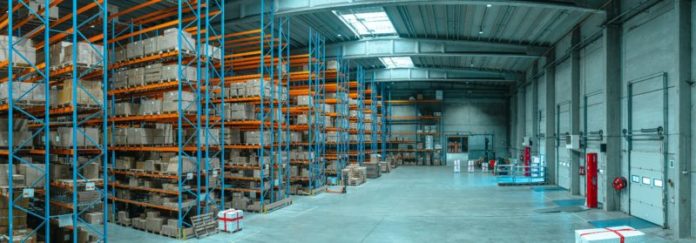
-
Colliers reports land lease rates will rise 2.8% and warehouse rents will rebound 4.8% by yearend, driven by demand from e-commerce, logistics and manufacturing sectors
-
Demand will be stoked by an expected increase in foreign investment commitments in the next 6 to 12 months attracted by modern industrial parks in South and Central Luzon
-
Vacancies rise to 7.2% from 5.2% in H2 2021 as PEZA-registered enterprises quit due to the additional 12% value-added tax on the sales of goods and services
Land leasehold rates in the Philippines grew 0.6% year on year in H1 2022, driven by demand for space from e-commerce and logistics firms, while warehouse leases fell 10.7% y-o-y as rising vacancy made landlords more flexible with rental negotiations, Colliers said in a report.
By the end of 2022, leasehold and rates for warehouse leases should rise 2.8% and 4.8% y-o-y, respectively, driven by demand from e-commerce, logistics and manufacturing firms, as well as from the thriving cold chain and data center sectors, the report said.
The global real estate services and investment management firm expects demand to come from an increase in foreign investment commitments in the next six to 12 months attracted by the expansion of industrial parks and planned modernization of facilities in South and Central Luzon.
The report said growth in e-commerce and manufacturing should sustain warehousing demand, from 1 hectare in H1 2022 to 14 hectares in H2 2022. The report said data centers will also be potential industrial space locators beyond 2022.
Colliers said developers should corner demand from data centers, and locators should also be quick to secure space in new industrial parks that will be developed in Central Luzon. It said developers with warehouses should keep modernizing their facilities to stay abreast with demand from locators doing seamless transactions with e-commerce consumers.
In industrial parks, Colliers said vacancies increased as some companies registered with Philippine Economic Zone Authority have not renewed their lease contracts.
“In H1 2022, we recorded vacancy increasing to 7.2% from 5.2% in H2 2021. This is partly due to locators, particularly PEZA-registered enterprises, vacating warehouse and industrial spaces brought about by the additional 12% value-added tax (VAT) on the sales of goods and services imposed by the CREATE Law,” the company said, referring to the Corporate Recovery and Tax Incentives for Enterprises.
Colliers believes that data centers are among the thriving sectors that will drive industrial space demand in the Philippines beyond 2022. Industrial parks should be the preferred location of data center operators given their available land size and power requirements.
Delivery of 28 hectares of new industrial supply is expected in Cavite, Laguna and Batangas (CALABA) in 2022, led by the completion of two industrial parks in Batangas, said Colliers.
The planned completion of 140 hectares of industrial park space in the CALABA corridor from 2022 to 2024 provides further opportunities for data center investors to lock in spaces in these locations, the company said.
New industrial supply is also expected to come on stream in Clark this year.
The Department of Trade and Industry (DTI) is currently pitching Central Luzon as a manufacturing and logistics hub, highlighting growth opportunities in Pampanga’s New Clark City, Bataan’s Freeport Area, and Tarlac’s Luisita Industrial Park.
Singaporean firms are also keen on investing in the Filinvest Innovation Park in New Clark City, said Colliers.
The first phase of the industrial hub is now accepting locators, particularly companies involved in logistics, e-commerce, light manufacturing, and data center operations.
Colliers believes the modernization of Clark International Airport will raise the attractiveness of Central Luzon for more manufacturing and logistics investments. Development of passenger railways, such as the Manila-Clark Railway, and cargo railways should spur regional growth.
DTI said the region could also take advantage of pro-investment measures such as the CREATE Law, and amendments to the Foreign Investments, Public Service and Retail Trade Law.
As space take-up increases, Colliers expects a marginal rise in land leasehold rates this year as more e-commerce and logistics firms, thriving cold chains and data center firms vie for space.
“Colliers Philippines believes that the region remains a viable alternative location outside of CALABA given its skilled manpower and relatively cheaper wages. Developers and locators should keep an eye on the completion of industrial parks and facilities in the region.
“We recommend that developers or landlords increase power supply and provide ancillary spaces from existing facilities to accommodate new technologies such as robotics, improved lighting systems, and artificial intelligence (AI) systems,” the report said.
Colliers said continued inflow of manufacturing investments should be crucial in sustaining the take-up of warehouse spaces and industrial lots across the country’s major industrial parks.
The report cited data from the Philippine Statistics Authority (PSA) showing approved foreign direct investments reached P9 billion (US$172 million) in Q1 2022, down 54% y-o-y. Analysts attribute the drop to tighter mobility in January-February 2022 amid the Omicron variant wave.
Manufacturing remains the largest recipient of foreign investment pledges. In Q1 2022, the sector drew P5.2 billion, or 57%, of total approved foreign investments during the period.
The Philippines can expect more than P500 billion (US$9.6 billion) worth of investment pledges in the next 18 months, particularly in manufacturing, digital infrastructure and services, DTI said. The investment pledges include manufacturing for personal protective equipment, international sports and apparel brands, electronics, printers, drones, and battery technology.




